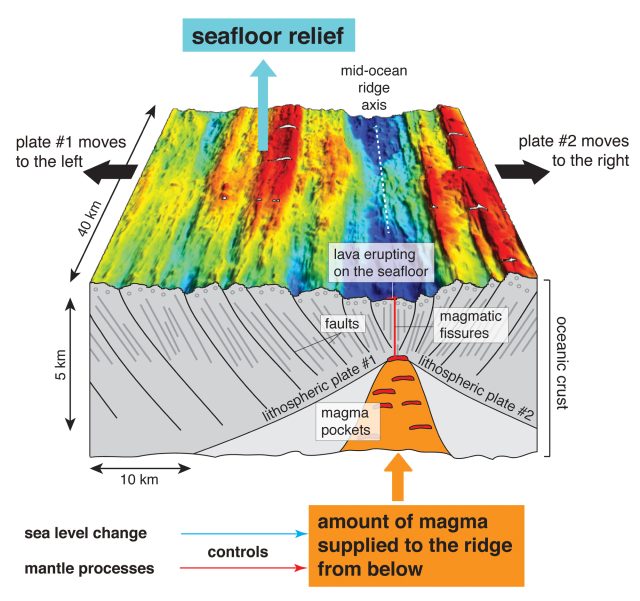Can the climate really control mid-ocean ridges?
Ars Technica 2015-10-19

(credit: Jean-Arthur Olive)
Sometimes in science, even a successful prediction isn’t enough. Earlier this year, we covered some research suggesting that ice age fluctuations in sea level influenced the volcanism at mid-ocean ridges, actually shaping the seafloor as a result. Analyses of the small ridgelines (called “abyssal hills”) that parallel the mid-ocean ridges found variations in height over time lining up with the length of the glacial cycles—just as this idea would predict. A new study from a team led by Lamont-Doherty Earth Observatory researcher Jean-Arthur Olive, however, argues that this explanation can’t be the right one.
The idea behind the connection is that a lower sea level means slightly lower pressure beneath the seafloor, where rising mantle rock turns to magma as it decompresses. The lower the pressure, the stronger the decompression, and the more magma is produced. And if you’ve got more magma, you can make thicker oceanic crust, which means taller ridge lines. But the devil in these details is that we can't check past magma production directly—we can only infer it through the shape of the seafloor.
So Olive and his colleagues closely examined three processes that could potentially link magma production and the height of these ridges.